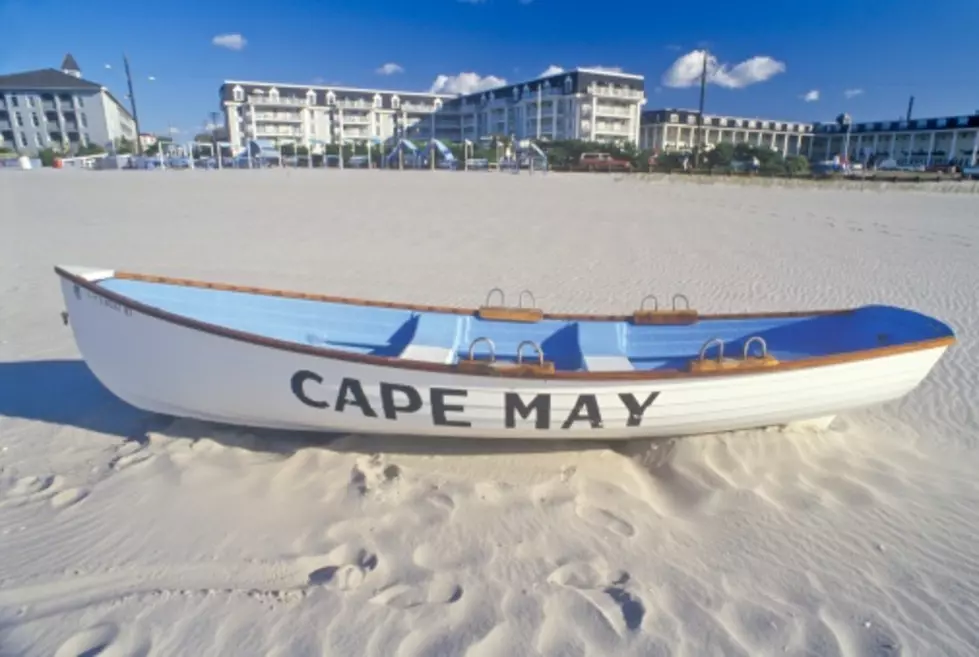
Experts: Black vulture numbers on rise at the Jersey Shore
CAPE MAY POINT, N.J. (AP) — The sighting of a black vulture used to trigger a rare bird alert at the Cape May Bird Observatory.
Birders would grab their scopes and head to the bush to get a firsthand look at a bird that belongs in tropical and subtropical climates.
Brien Moscatello, a naturalist at the observatory, remembers special trips being organized just to find them.
These days 50 can be seen at a time — a scene right out of a horror movie — but it draws little attention. Large gatherings in the sky are called a "kettle," and if they are perching it is known as a "wake."
They aren't migrants. They were not blown off course. They live here year-round, and the barren winter landscape really makes them stand out.
"You can see 40 or 50 of them. It's probably the same gang. They feed at the landfills. They roost at night at the Lower Township Public Works yard," Mike Crewe, program director at the observatory, told The Press of Atlantic City.
David Mizrahi, director of research for the New Jersey Audubon Society, said a warming trend over the past 50 years is responsible for the northward movement of black vultures.
"I think it's clearly the case. Winters are warmer. Birds are staying longer. Black vultures are expanding their breeding range," Mizrahi said.
While there is now a resident population here year-round, some could summer here and then migrate south. Counts at the society's hawk watch platform at Cape May Point State Park have doubled in the past decade or so, to 208 counted in 2014. These can be birds flying high in a kettle, using the wind to gain altitude to cross the 16-mile-wide Delaware Bay. Then again, they could also be looking for dinner. Turkey vultures use scent to find food, but black vultures use their vision.
"It's tricky business counting black vultures, because they don't always look like they're migrating. They hang around and circle around," Mizrahi said.
Crewe said it is clear black vultures are expanding their range northward. It also helps that black vultures seem to feel comfortable living next to humans, dining at landfills and trash bins, and on roadkill in a state with almost 40,000 miles of roadway.
"These are not birds heading to South America in winter and coming back in the spring. They are increasing, and people are noticing them," Crewe said.
The trend is documented in the annual Christmas bird count done on a 7.5-mile radius of southern Cape May County every year since 1927.
The first black vulture was seen in 1939 but was considered an anomaly. It wasn't until 1954 that the second one was counted, and at the time the northern limit for the species was Maryland. It wasn't until 1985 that more than one was seen, and that year the total was three. Then they disappeared again until 1994, when 14 were counted.
Since then, they have been counted every year, and the numbers have skyrocketed to a high of 183 in 2011. The 2014 Christmas bird count done this past December totaled 137, including 82 on a single roost.
The birds also have been documented in Salem and Cumberland counties, and were first registered at an Atlantic County bird count six years ago. The first breeding pair was documented in Hunterdon County in 1981.
The black vulture will eat dead animals — but unlike the native turkey vulture that feeds only on carrion, it will also kill its dinner.
"I've seen black vultures killing dogs in Mexico. In the summer they eat reptiles, amphibians, snakes, lizards and (eggs) bird nests," Crewe said.
They also follow turkey vultures, whose superior sense of smell can lead them to carrion, then muscle them away for the meal.
"They're smaller, so they use mob rule to get their way," Crewe said.
Black vultures can use this mob rule to attack animals that are old or wounded, or those weak from giving birth. They have learned that hunters and trappers often dress out their game in the field and leave behind a free meal.
Unlike the native turkey vulture, with its distinctive pink or red head, the all-black vultures also have been known to attack livestock. There have been reports of them attacking pigs and sheep in Cumberland and Cape May counties. The state Division of Fish and Wildlife grants permits in special cases to kill nongame species. Of the 58 depredation control permits issued in 2014, 15 were for black and turkey vultures. Six went to airports, four to farming operations, two went to government agencies, utilities picked up two and one went to a school district.
Most experts figure the vultures are here to stay as long as the winters don't get too cold. They have moved north, but only up the coast where the ocean moderates the winters. Farther west, they have moved only as far north as Arizona and New Mexico.
"Black vultures show highly adaptive behavior. They're great opportunists. They never miss a trick," Crewe said.
Louise Zemaitis, a New Jersey Audubon Society naturalist who has helped document the rise with the Christmas bird count, stresses this is why the annual count is so necessary, and she credits a combination of adaptation and climate change for the trend.
Copyright 2015 The Associated Press. All rights reserved. This material may not be published, broadcast, rewritten or redistributed.
More From New Jersey 101.5 FM









